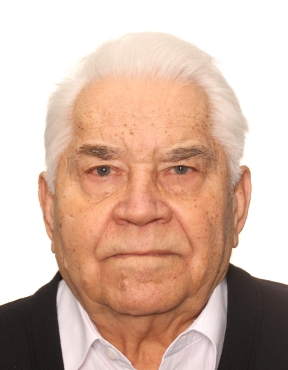 |
Dr. Yuli ChashechkinIshlinsky Institute for Problems in Mechanics of the Russian Academy of SciencesObservational, Logical And Mathematical Foundations Of The Complete Theory Calculating Flows Dynamics And Structure 5th Intl. Symp. on Materials/Solid State Chemistry and Nanoscience for Sustainable Development Back to Plenary Lectures » |
Abstract:Regularized regions outlined by sharp boundaries observe in fluid and gas flows over the entire range of scales from light years in space [1] to millimeters in the laboratory [2]. The structure of flows is changed continuously. Fluid media are heterogeneous due to the inhomogeneity of the substances, pressure or temperature distribution [3], and stratified in the gravity field. Various nanoscale aggregates of physical and chemical nature existing in liquids and gases are reconstructed and disintegrated with total energy conversion. The heat and kinetics parts of total energy are transformed into potential surface energy during the aggregates formation and released at their destruction converting into other forms, including the energy of microflows. A universal visual image of energy distribution on a microscales is the Sun photosphere. The microflows provide zero static friction of fluids. The aim of the talk is presenting consistent methods for calculating and observing the dynamics and structure of fluid and gas flows taking into account the sequences of internal energy transport and conversion. The basis of the flows theory constructing is the logic of Aristotle-Ockham-Leibniz, supplemented by the requirement of definability of the subject of research, the criteria of causality and completeness [4]. To calculate the dynamics and structure of flows, a parametrically and scale-invariant system of equations for the density, momentum, total energy and matter transfer is used. The system closed by the equations of state for the Gibbs potential and density [4]. Analysis of flows, which begins with the calculation of a fluid state at rest, shows that in the gravitational field near inclined boundaries impermeable to matter, thin flows are formed. Known since the forties of the last century as "diffusion induced flows on topography", they always exist both near stationary and moving bodies, and in the fluid flow near solid boundaries. The next step is the calculation of infinitesimal periodic flows, performed by theory of singular perturbation with immersing the linearized problem in the algebra of complex numbers. Analysis shows that the total (minimum in the nonlinear formulation) number of solutions is determined by the system order and the degree (high!) of the characteristic (dispersion) equation. When passing to algebra of complex numbers, the frequency – a measure of wave energy, remains real, and the wave number is complex. Its imaginary part describes the attenuation of propagating waves. The results of the dispersion equations analysis carried out by singular perturbation theory are used to construct complete analytical or numerical solutions of the system. Analysis of the obtained formulas shows that regular solutions describe known waves – gravitational surface waves at the interfaces and internal waves in the thickness of the fluid, capillary, inertial, acoustic and hybrid ones. Rich families of singular solutions characterize sets of ligaments, which correspond to interfaces and fibers in the flow patterns. The obtained solutions determine the requirements for the methodology of the complete experiment – the choice of the number and type of recorded parameters, the size of the observation area, sensitivity, and temporal/spatial resolution of the instruments that determine the completeness and error of the results. In a nonlinear formulation, all components of the flows – both waves and ligaments – directly interact with each other, generating new components complicating the flow pattern. The flow components attenuate at different rates under the influence of dissipative factors as they run away from the source. High-resolution schlieren images of different flows in a laboratory tank filled with a continuously stratified fluid illustrate general properties of the solutions. Among examples are diffusion induced flows on obstacles, internal waves, wakes, vortices and filaments generated by oscillating or moving bodies that are a plate, cylinder, sphere, as well as multicomponent convective flows with phase transitions. Observations of some phenomena in the ocean and atmosphere supplement laboratory data. The proposed classification of fluid flow components and the closed technique for their calculation can be used to analyzing various flows in the environment and industrial conditions with a guaranteed error estimate. |
|